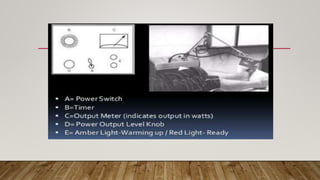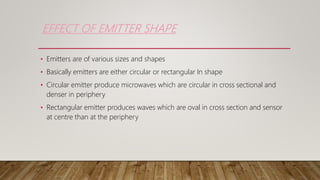Microwaves are electromagnetic waves with a frequency between 300 MHz and 300 GHz that can be used for diathermy therapy. Microwaves are produced using a power supply, magnetron, and emitter/antenna. They are absorbed more by tissues with high water content like muscle and heat the surface more than deeper tissues. Microwaves can be used to treat pain, inflammation and other conditions by increasing blood flow and metabolism through localized heating, but risks include burns if moisture is present or the eyes/testes are exposed directly to the beams. Proper positioning and monitoring of the patient is needed during treatment.





































